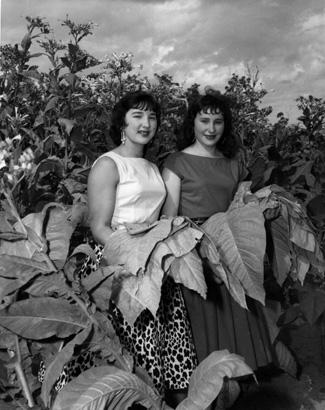|
Tobacco
Western Australia had a short-lived, but important, tobacco-growing industry between the 1930s and the 1960s.
Its importance lay, not in the export revenue it generated, but in that it showed the preparedness of government and farmers to encourage diversification with new kinds of crops.
Experimental tobacco farming began in Western Australia during the 1920s. The State government hoped to encourage the establishment of a
particularly lucrative cash crop in the South West.
When farming on a commercial scale began in 1930 there were about 10 hectares of land under cultivation. By 1936 that figure had increased to 400 hectares. Tobacco
produced was purchased by Australian buyers for local cigar and cigarette manufacture. The largest local tobacco producer was Michelides Ltd.
With the outbreak of the Second World War tobacco production peaked in 1942-43 at which time 639 hectares were under cultivation. From this high point the industry
went into a steady decline. In spite of attempts by the government to stimulate tobacco production during the 1950s through a War Service farm scheme, the industry
failed and ultimately collapsed in the 1960s. In the end the chloride content of the locally produced tobacco leaf gave a poor burn for making cigarettes and buyers preferred tobacco from other sources.
|











